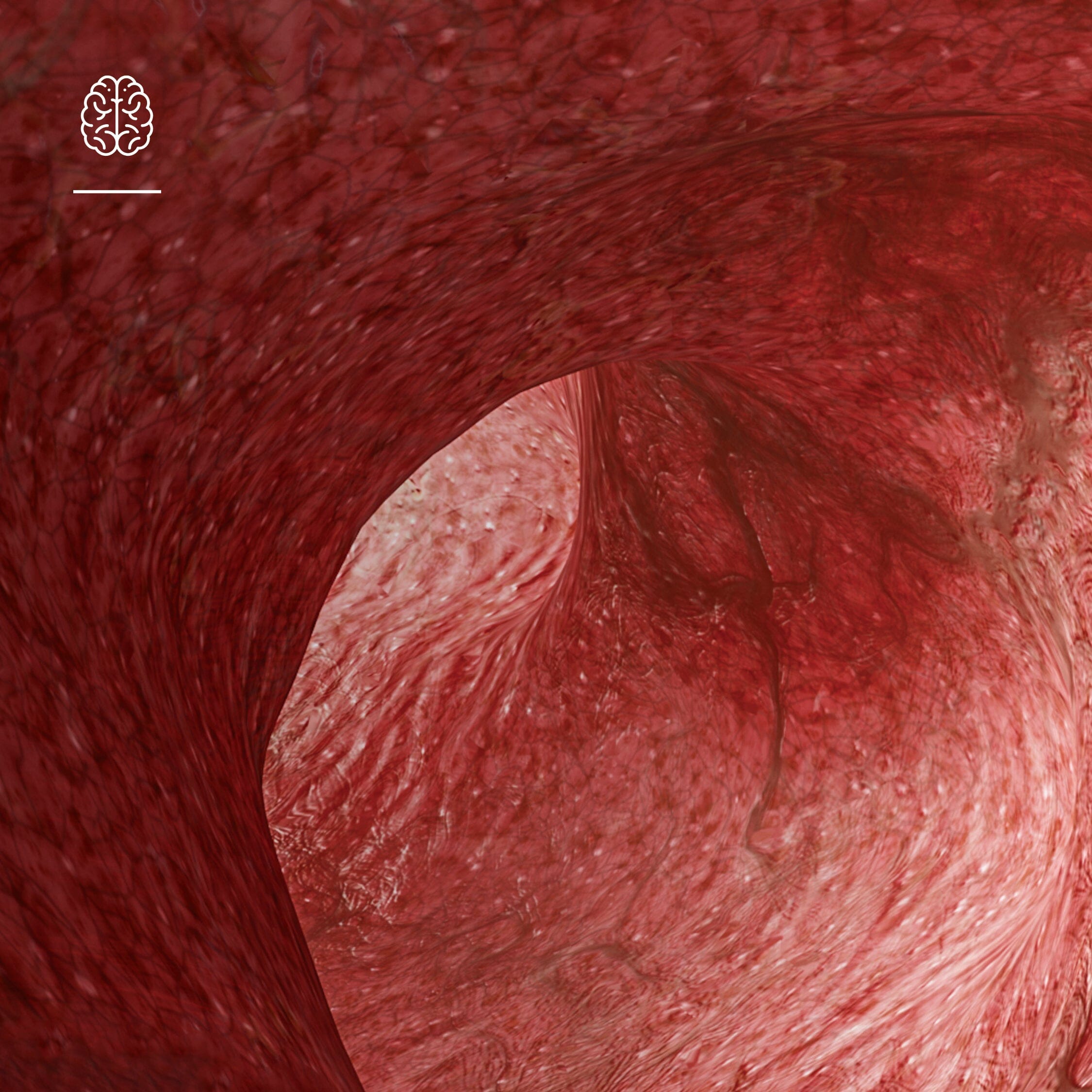Your blood vessels form part of your circulatory system and are responsible for ensuring healthy blood flow around your entire body. As blood flows through your circulatory system, it carries oxygen, removes waste, delivers nutrients, and plays an important role in healing and immunity.
The glycocalyx is a microthin, non-sticky, protective layer found in the lining of your blood vessels. It interacts with blood cells that flow through these vessels and plays a significant role in the protection and integrity of the circulatory system. As we age, the glycocalyx degrades and this impacts the function of your cells, organs and body systems.
This little-known structure helps preserve the function of our circulatory system in three key ways:
|
Protective barrier |
A healthy glycocalyx acts as a gatekeeper, protecting our blood vessels from direct contact with blood cells. It protects our blood vessels from damage from any toxic and inflammatory substances transported through the circulatory system. |
|
Blood volume control |
Many physiological reactions are involved in the management of blood volume control. The glycocalyx senses the tension and pressure in blood vessels and sends a signal to the body to release chemicals, such as nitric oxide, which allow the blood vessels to relax, expand and allow blood to flow more freely. For example, when we exercise, our heart pumps faster, more blood is circulated and our blood vessels need to increase in diameter to allow this. |
|
Blood flow |
An intact, non-sticky glycocalyx reduces the adhesion of substances such as cholesterol to the lining of your blood vessels. Molecules in the glycocalyx (e.g. heparin sulphate) interact with the blood cells to reduce coagulation (e.g. blood clots)[1]. |
Research shows that the thickness of the glycocalyx in those aged 58-62 years old is significantly reduced when compared to those aged 28-30 years old². The glycocalyx can easily be damaged and this happens over time as we age. Factors such as oxidative stress, lack of exercise, smoking, or a diet high in sugar, saturated fat, or LDL cholesterol all enhance the likelihood of damage.
Evidence suggests that an intact glycocalyx protects the vessel wall, whereas disruption of the glycocalyx increases the risk of inflammation, fatty plaque formation and eventually blockage in the arteries³. The glycocalyx plays a role in health conditions such as atherosclerosis, cardiovascular diseases, diabetes and cancer¹.
How can we support the integrity of the glycocalyx?
You can support the health of the glycocalyx by maintaining or implementing healthy lifestyle habits such as regular exercise, managing exposure to pollutants and chemicals, managing stress levels, and eating a healthy wholefoods diet. Read more about nutrition, exercise, stress, pollutants and smoking in the blogs below:
How exercise influences the way you age
Stress and its effect on the way you age
How smoking affects the aging process
You can also consider supplementation to support the integrity of your blood vessels.
Rhamnan Sulphate
Rhamnan sulphate is found in fibre extracted from a green seaweed called Monostroma nitidum. Like many marine product polysaccharides, this molecule has a similar structure to the glycocalyx and has been studied for the treatment of cardiovascular conditions. Studies have found that Rhamnan sulphate protect and restore the glycocalyx, supporting the normal structure and function of blood vessel walls⁴'⁵.
Suzy Walsh BBA (Hons)., BNat., mNMHNZ is a Registered Naturopath & Medical Herbalist
References:
¹ Weinbaum, S.; Cancel, L.M.; Fu, B.M.; Tarbell, J.M. The Glycocalyx and Its Role in Vascular Physiology and Vascular Related Diseases. Cardiovasc. Eng. Technol. 2021, 12, 37–71
² Machin, D. R., Bloom, S. I., Campbell, R. A., Phuong, T., Gates, P. E., Lesniewski, L. A., Rondina, M. T., & Donato, A. J. (2018). Advanced age results in a diminished endothelial glycocalyx. American journal of physiology. Heart and circulatory physiology, 315(3), H531–H539.
³ Nieuwdorp, M., Meuwese, M. C., Vink, H., Hoekstra, J. B., Kastelein, J. J., & Stroes, E. S. (2005). The endothelial glycocalyx: a potential barrier between health and vascular disease. Current opinion in lipidology, 16(5), 507–511.
⁴ Patil, N. P., Gómez-Hernández, A., Zhang, F., Cancel, L., Feng, X., Yan, L., Xia, K., Takematsu, E., Yang, E. Y., Le, V., Fisher, M. E., Gonzalez-Rodriguez, A., Garcia-Monzon, C., Tunnell, J., Tarbell, J., Linhardt, R. J., & Baker, A. B. (2022). Rhamnan sulfate reduces atherosclerotic plaque formation and vascular inflammation. doi: 10.1101/2022.02.10.479785
⁵ Terasawa, M., Hiramoto, K., Uchida, R., & Suzuki, K. (2022). Anti-inflammatory activity of orally administered Monostroma nitidum Rhamnan sulfate against lipopolysaccharide-induced damage to mouse organs and vascular endothelium. Marine Drugs, 20(2), 121. doi:10.3390/md20020121


![Never Grow Old - Longevity Issue [Nutrition Business Journal]](http://scienceresearchwellness.com/cdn/shop/articles/NBJ_Post_-_LinkedIn.jpg?v=1692742979&width=1500)
![Circulatory system care "vital" [NZHERALD]](http://scienceresearchwellness.com/cdn/shop/articles/SRW_-_News_Clip_-_Post_-_Cir1_-_D1_dfadc7dc-c57a-4f80-82bd-4fdb5ba5f0cd.jpg?v=1692742734&width=1500)
